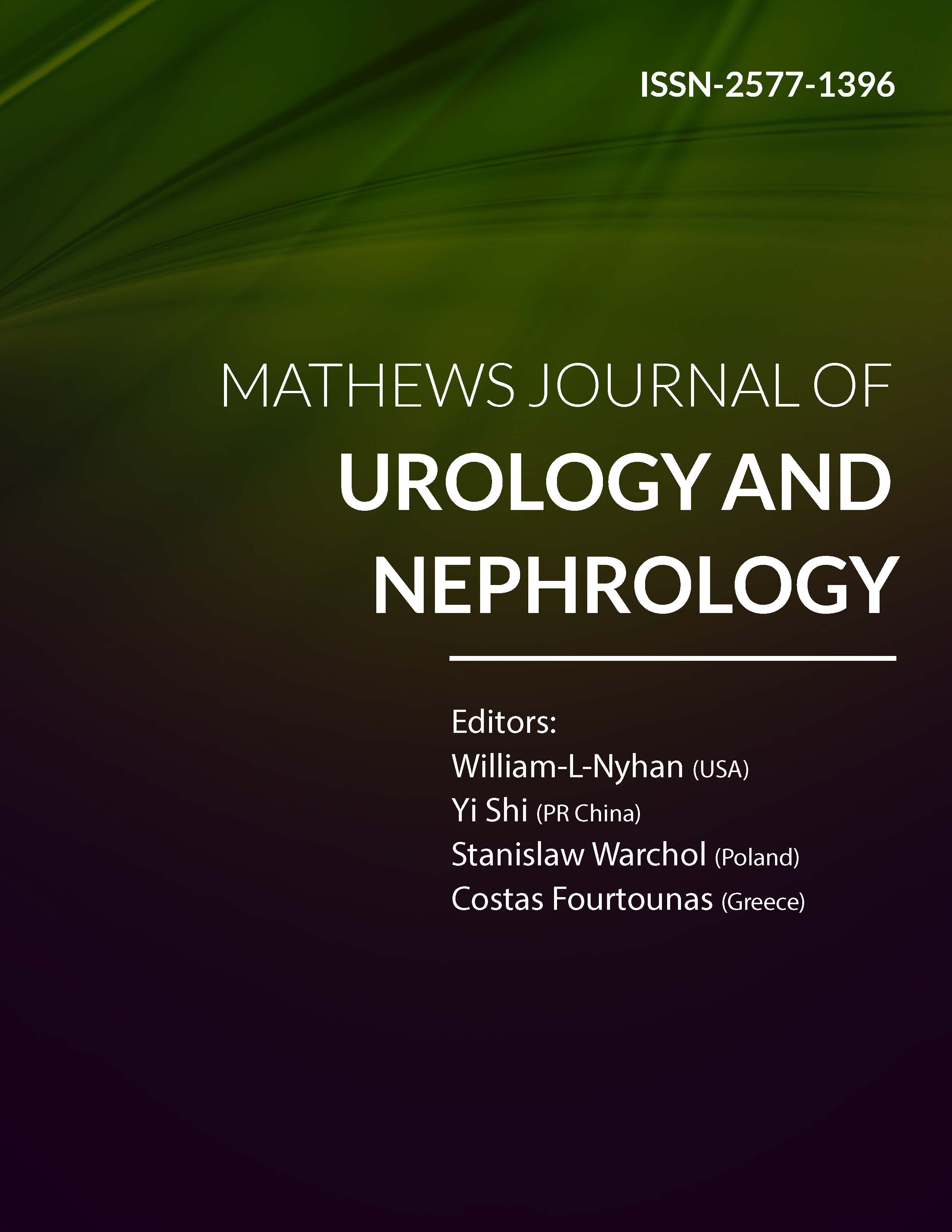
Information Links
Previous Issues Volume 5, Issue 1 - 2023
Complications of Hypospadias Repair in Children: A Single Center Experience
Chukwubuike Kevin Emeka1,*, Eze Thaddeus Chikaodili1, Okoloagu Nkiruka2
1Department of Surgery, Enugu State University Teaching Hospital, Enugu, Nigeria
2Department of Ophthalmology, Enugu State University Teaching Hospital, Enugu, Nigeria
*Corresponding author: Chukwubuike Kevin Emeka, Department of Surgery, Enugu State University Teaching Hospital, Enugu, Nigeria. E-mail: [email protected].
Received Date: January 09, 2023
Published Date: January 24, 2023
Citation: Chukwubuike KE, et al. (2023). Complications of Hypospadias Repair in Children: A Single Center Experience. Mathews J Urol Nephrol. 5(1):12.
Copyrights: Chukwubuike KE, et al. © (2023).
ABSTRACT
Background: Hypospadias repair is required for the correction of one of the most common congenital anomalies of the urogenital system and the repair is fraught with complications. The aim of study was to evaluate our experience with regards to complications witnessed in children who underwent hypospadias repair. Materials and Methods: This was a retrospective study of children who were operated upon for hypospadias, over a 5-year period, at the pediatric surgery unit of a teaching hospital in Enugu, Nigeria. The information analyzed included the patients’ age at presentation (in months), age at surgery (in months), class of hypospadias based on location of the meatus, state of the prepuce (circumcised/uncircumcised), method of hypospadias repair, post-operative complications. The follow-up was for 12 months. Results: A total of 72 cases of hypospadias were repaired during the study period. The mean ages of the patients at presentation and at surgery were 4 months and 23 months respectively. Coronal hypospadias was the most common type and about two-thirds of the patients were not circumcised at presentation. All the patients had tubularized incised plate (Snodgrass) method of repair and majority of the repairs were single stage repair. Twenty-three (31.9%) patients developed complications following the repair and urethrocutaneous fistula was the most common post-operative complication. Conclusion: Complications can follow attempts at hypospadias repair. Urethrocutaneous fistula was the most common complication recorded in the present study. This is followed by meatal stenosis, bleeding, wound infection, flap necrosis, urethral stricture and recurrent chordee in decreasing order of frequency.
Keywords: Children, Complications, Congenital, Hypospadias Repair, Urethrocutaneous Fistula.